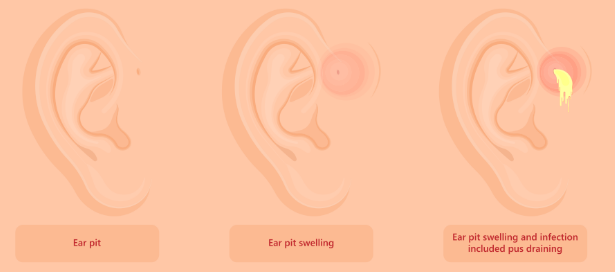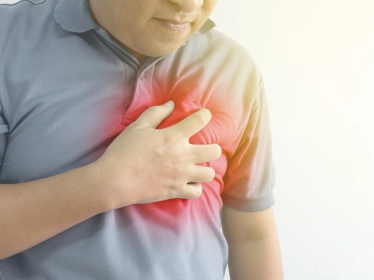PREAURICULAR SINUS IN CHILDREN
WHAT IS A PREAURICULAR SINUS?
A preauricular sinus is a congenital malformation which occurs then the ear tissues did not fuse completely during the 6th week of pregnancy. It appears as a tiny hole near top of the ear. What is not seen is that it has a tiny tunnel underlying, which may accumulate dirt and sebum. It exists in about 1% of the general population and may be hereditary. This malformation is often referred to as a preauricular sinus pit.
You should bring your child to a doctor if he experiences any of these symptoms
- Redness of the skin area around the sinus
- Painful lump near the sinus
- Foul smelling discharge from the sinus opening
Do note that other skin infections may occur anywhere around the sinus opening and may or may not involve the sinus opening itself.

WHAT DOES TREATMENT INVOLVE?
Your doctor will assess the severity of any infection and may prescribe oral antibiotics, intravenous antibiotics or opt for preauricular sinus removal surgery to release any collection of pus under the skin.
A surgery to remove the entire sinus (both the hole and the underling tunnel/ cyst) may be planned at a later date to prevent future infections.
Surgery for the non-infected preauricular sinus is not recommended unless there is persistent discharge from the sinus opening.
WHEN IS SURGERY RECOMMENDED?
Surgery is typically recommended when there is persistent smelly discharge or recurrent infections. Preauricular sinus removal surgery is not generally needed unless the condition causes significant issues or infections. For a preauricular sinus newborn, surgery is often delayed until later in childhood, unless there are complications.
WHAT DOES THE PREAURICULAR SINUS SURGERY INVOLVE?
The operation is a day surgery procedure which is done under general anesthesia (GA). An oval-shaped cut around the sinus opening is made and the whole sinus tract (including a small cuff of the underlying ear cartilage attached to its end) is removed.
WHAT THE RISKS INVOLVED IN THE SURGERY?
Before the surgery, an anaesthetist will discuss the risks associated with general anaesthesia (GA).
Some risks specific to the surgery include:
- Wound bleeding and infection (less than 1%)
In some cases, a course of oral antibiotics is given post-operation to help prevent infection. If the wound is infected your child may require regular daily dressings until complete healing occurs. - Seroma
While the underlying tissue is healing, there is a potential for fluid to accumulate in the wound, leading to the formation of a seroma. Small seromas usually resolve spontaneously with post-operative wound care, oral antibiotics and pressure dressing. - Recurrence of infection
Even though every attempt is made to remove the preauricular tract completely, there is still a possibility of the infection recurring (less than 2%). This risk is higher if your child has had many infective episodes before surgery, or if surgical removal is attempted during an active infection. - Wound dehiscence/ poor wound healing
Sometimes the wound may fail to heal completely, or it may split open after initial closure. As a result, your child will need daily dressing and wound care for over a week until the wound heals.
CARING FOR YOUR WOUND AFTER SURGERY
Keep the pressure dressing dry for 48 hours after the surgery
Avoid all strenuous physical activities for one week
Consult a doctor if your child experiences the following:
- Increasing swelling and pain around the wound
- Excessive bleeding or discharge from the wound site/ dressing
- Persistent high fever above 38 degrees Celsius, despite anti-fever medications
A follow-up appointment is scheduled one week after discharge to check for wound healing. There is no need for removal of stitches as soluble sutures will be used.





